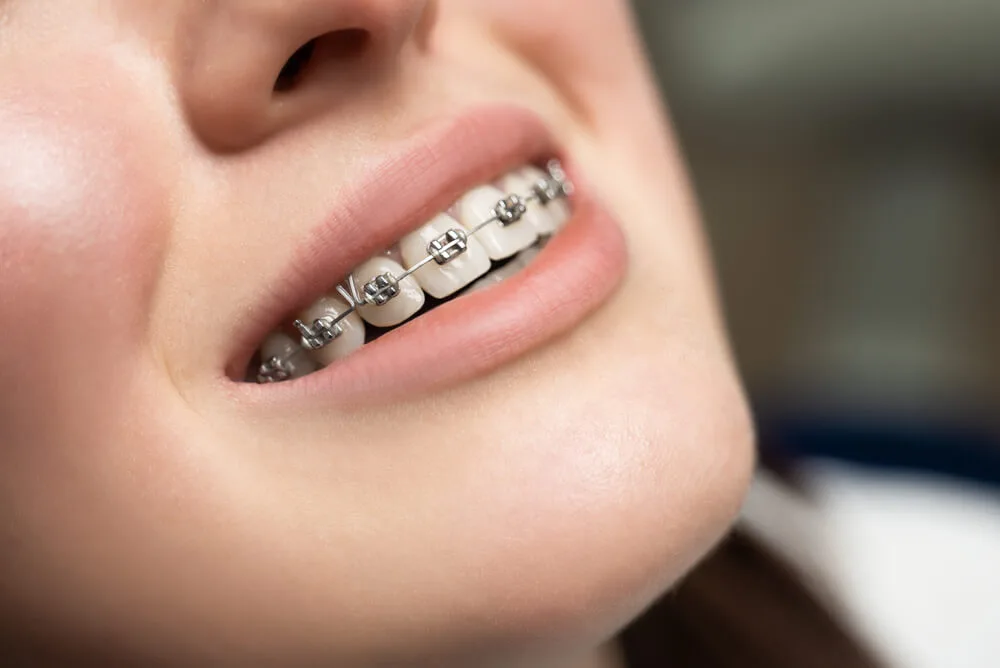Braces aren’t just for kids and teens anymore. More adults are choosing to straighten their teeth and improve their smiles. Whether it’s for health reasons or appearance, there are many options available that fit adult lifestyles. If you’re considering getting braces, it’s important to know the choices out there. In this article, we’ll go over the different types of braces available for adults. If you’re looking for guidance, a dentist Springfield can help you find the best fit.
Why Do Adults Get Braces?
Adults might decide to get braces for several reasons. Some didn’t have the chance to straighten their teeth when they were younger, while others are seeking treatment because of shifting teeth, bite issues, or oral health concerns. Braces not only improve how your teeth look, but they can also make it easier to clean them and improve your bite.
Traditional Metal Braces
The most common type of braces is the traditional metal ones. They’ve been around for a long time and are known for being reliable and effective. Modern metal braces are smaller and more comfortable than the ones from years ago.
How They Work
Traditional braces use metal brackets and wires to move your teeth into the correct position. The dentist adjusts the wires regularly to make sure your teeth shift as planned. You can even choose coloured bands to make your braces more fun and personalised.
Pros and Cons of Metal Braces
Pros:
- Effective for almost all types of alignment problems
- Usually the least expensive option
- Can handle complex cases
Cons:
- Noticeable, which might not be ideal for adults who prefer a subtle look
- Some people find them uncomfortable, especially after adjustments
- Food restrictions, like avoiding sticky or hard foods, are common
Ceramic Braces
Ceramic braces are similar to metal braces, but they use clear or tooth-coloured brackets, making them less visible. They’re a popular choice for adults who want effective treatment without the noticeable appearance of metal.
How They Work
Just like metal braces, ceramic braces use brackets and wires to straighten teeth. The only difference is that they blend better with your teeth, making them harder to spot. A dentist Springfield might recommend ceramic braces if you want a balance between effectiveness and appearance.
Pros and Cons of Ceramic Braces
Pros:
- Less noticeable than metal braces
- Effective for most alignment issues
- Still strong and durable
Cons:
- Usually more expensive than metal braces
- Brackets can stain if not properly cared for
- Slightly larger than metal brackets, which might cause some discomfort
Lingual Braces
Lingual braces are a less common type, but they have a big advantage—they’re hidden behind your teeth. This makes them invisible from the front, which is great for adults who want a completely discreet option.
How They Work
Lingual braces use metal brackets and wires just like traditional braces, but they’re attached to the back of your teeth instead of the front. This means no one will notice you’re wearing braces unless they look closely.
Pros and Cons of Lingual Braces
Pros:
- Completely hidden from view, perfect for a discreet look
- Work just as well as traditional metal braces
- Custom-made for your teeth
Cons:
- More expensive due to the customised design
- Harder to clean and maintain
- Can cause initial discomfort or speech difficulties as your mouth adjusts
Invisalign: Clear Aligners
Invisalign has become a very popular choice among adults. These are clear plastic aligners that fit over your teeth like a mouthguard. Invisalign offers a comfortable and nearly invisible way to straighten teeth.
How Invisalign Works
Invisalign uses a series of clear, custom-made aligners that gradually shift your teeth into place. You wear each set of aligners for about two weeks before moving on to the next. You can take them out to eat, drink, and brush your teeth, making them very convenient for daily life.
Pros and Cons of Invisalign
Pros:
- Nearly invisible, making them a great choice for adults
- Removable, so there are no food restrictions
- Comfortable with no wires or brackets to irritate your mouth
Cons:
- Not suitable for complex cases
- Requires discipline to wear them for 20-22 hours a day
- More expensive than some other options
Self-Ligating Braces
Self-ligating braces look similar to traditional metal braces, but they use clips or doors instead of elastic bands to hold the wire in place. This allows the braces to move more freely and might make adjustments quicker.
How They Work
Self-ligating braces use a sliding mechanism that moves your teeth into position with less pressure. This type of brace can be metal or ceramic, offering a choice between visibility and a more discreet look.
Pros and Cons of Self-Ligating Braces
Pros:
- Typically require fewer appointments for adjustments
- Easier to clean without elastic bands
- Can be more comfortable than traditional braces
Cons:
- Still visible like traditional metal braces
- Might be more expensive than regular metal braces
- Not suitable for everyone, depending on the case
Clear Braces
Clear braces are similar to ceramic braces but use transparent brackets that blend with your natural teeth. They offer a middle ground between metal braces and clear aligners like Invisalign.
How They Work
Clear braces use brackets and wires, but the brackets are clear, making them less noticeable. They function the same way as metal and ceramic braces, gradually moving teeth into place through regular adjustments.
Pros and Cons of Clear Braces
Pros:
- Less noticeable than metal braces
- Strong and durable, suitable for many alignment problems
- Affordable compared to some other clear options
Cons:
- Brackets can stain if not cleaned properly
- More visible than clear aligners like Invisalign
- Similar discomfort to traditional braces
How to Choose the Right Braces for You
Choosing the right braces depends on your specific needs, budget, and lifestyle. It’s essential to talk to a dentist who can help you decide which option is best. Here are some factors to consider:
Budget
Different types of braces come with different costs. Metal braces are generally the most affordable, while options like Invisalign and lingual braces are more expensive. If you’re worried about price, ask your dentist Springfield about payment plans or financing options.
Discretion
If you’re an adult who wants a subtle look, options like Invisalign, ceramic, or lingual braces might be best. Metal braces are the most visible, but they are also the most effective for complex alignment problems.
Comfort
Some braces are more comfortable than others. Clear aligners like Invisalign don’t have brackets or wires, which makes them a comfortable option. Metal and ceramic braces can cause discomfort after adjustments, so keep this in mind when choosing.
Maintenance
Certain braces require more maintenance. For example, metal and ceramic braces need careful brushing and flossing to keep them clean. Invisalign aligners are easy to clean, but you must remember to put them back in after eating and drinking.
The Benefits of Adult Braces
Getting braces as an adult has several benefits, from improving your appearance to enhancing oral health. Straight teeth are easier to clean, which can help prevent cavities and gum disease. Properly aligned teeth can also improve your bite and reduce the risk of jaw pain.
Better Oral Hygiene
Straighter teeth are easier to brush and floss, which can lead to fewer dental problems. Braces can help close gaps, straighten crowded teeth, and make it easier to clean your mouth properly.
Improved Confidence
A straighter smile can boost your confidence, making you feel better in social situations or at work. Many adults feel more comfortable smiling after completing orthodontic treatment, which can positively impact their daily lives.
Conclusion: Finding the Right Fit
There are many options available for adults who want to improve their smile. Whether you choose traditional metal braces, clear aligners like Invisalign, or something in between, each type has its benefits. Talking to a dentist is the best way to figure out what works for your specific needs. If you’re in the market for braces, don’t hesitate to consult with a dentist Springfield to explore the best options for you.
Braces can make a big difference in your smile and overall health. With the right choice, you’ll be on your way to a straighter, healthier smile that you’ll love to show off!






